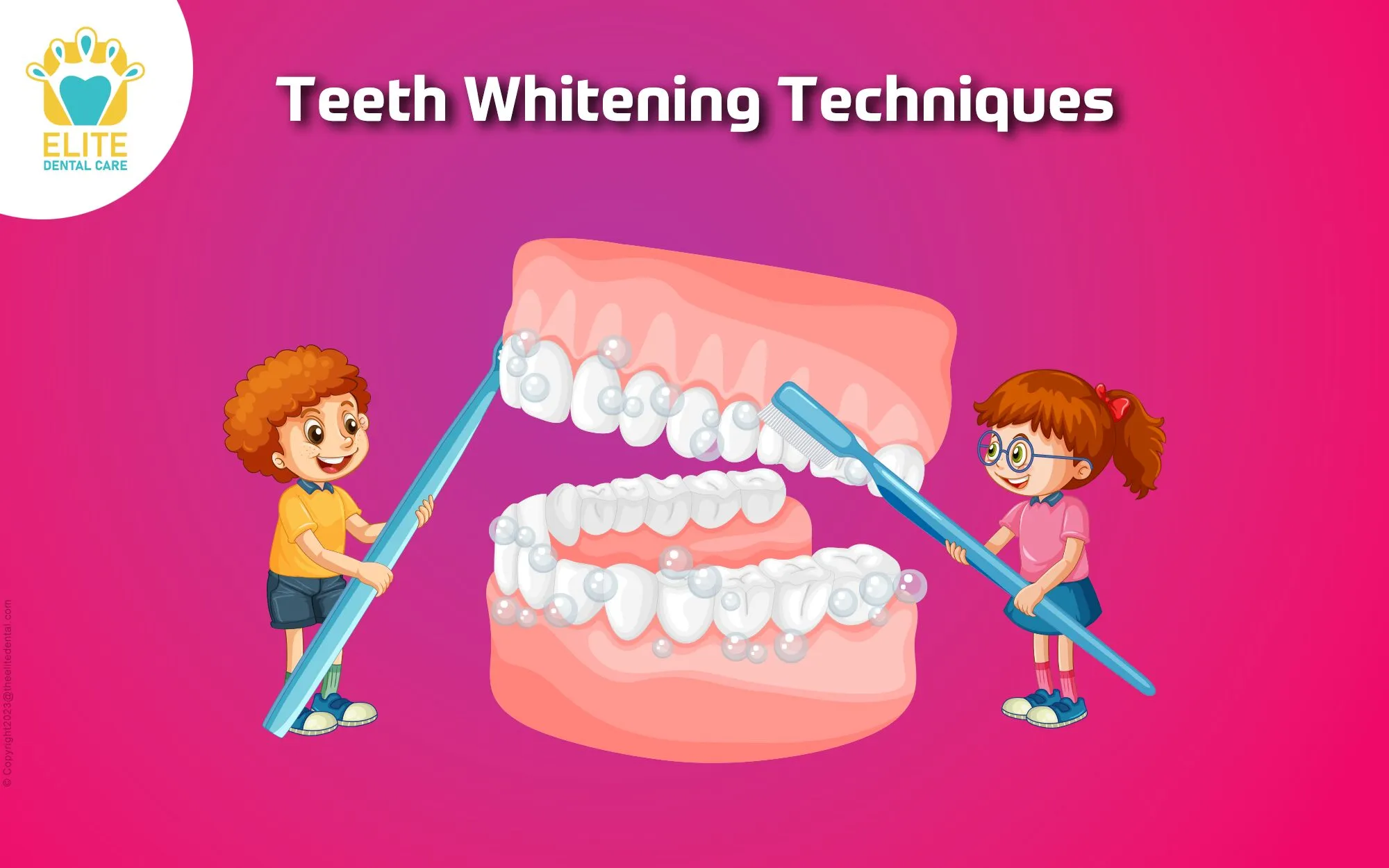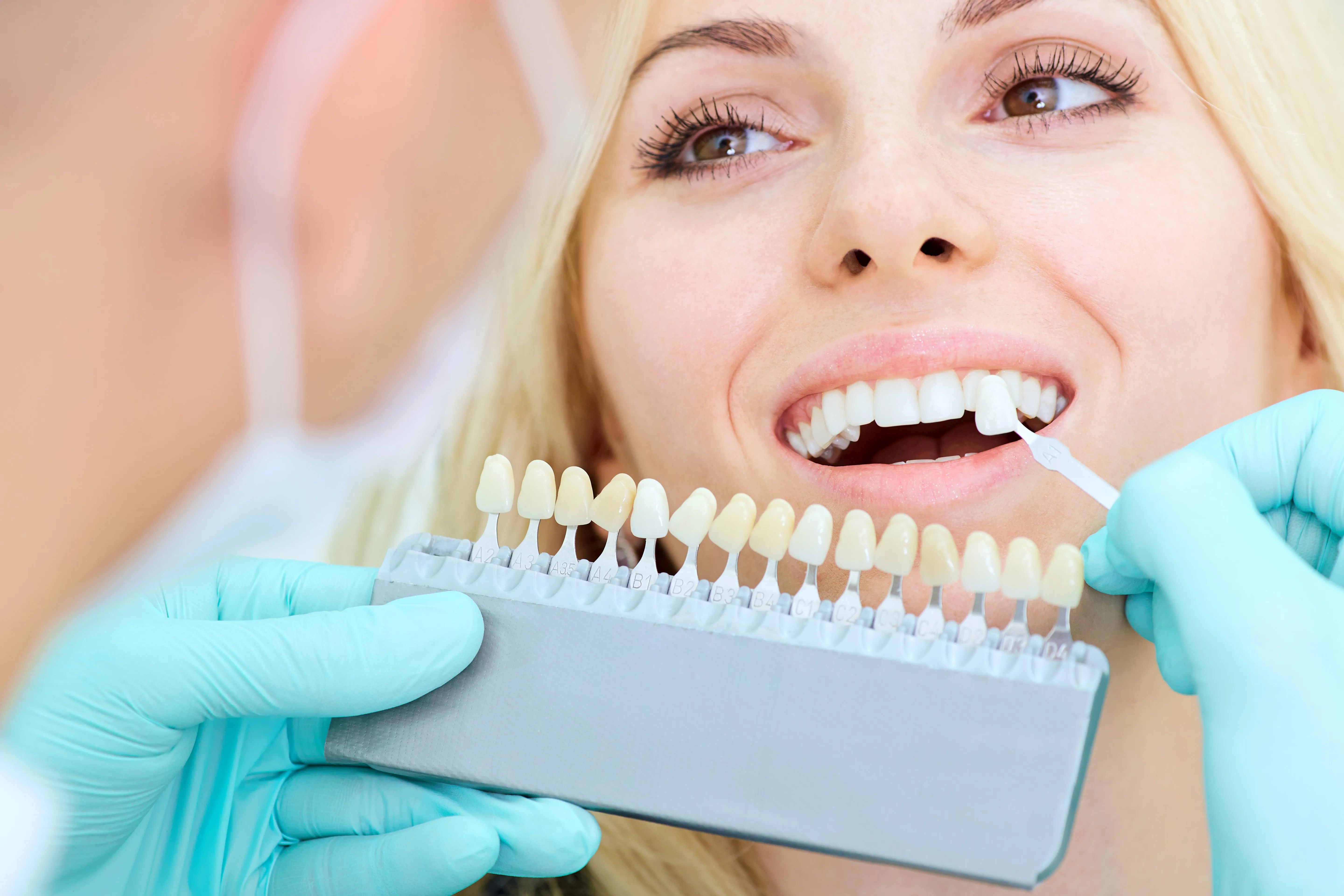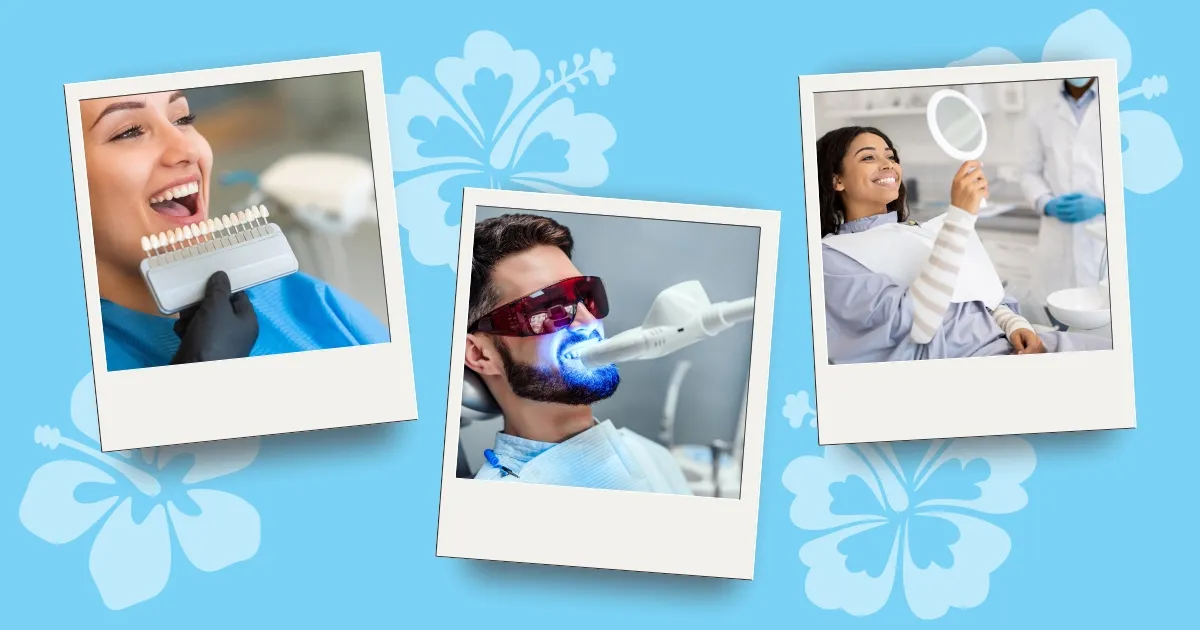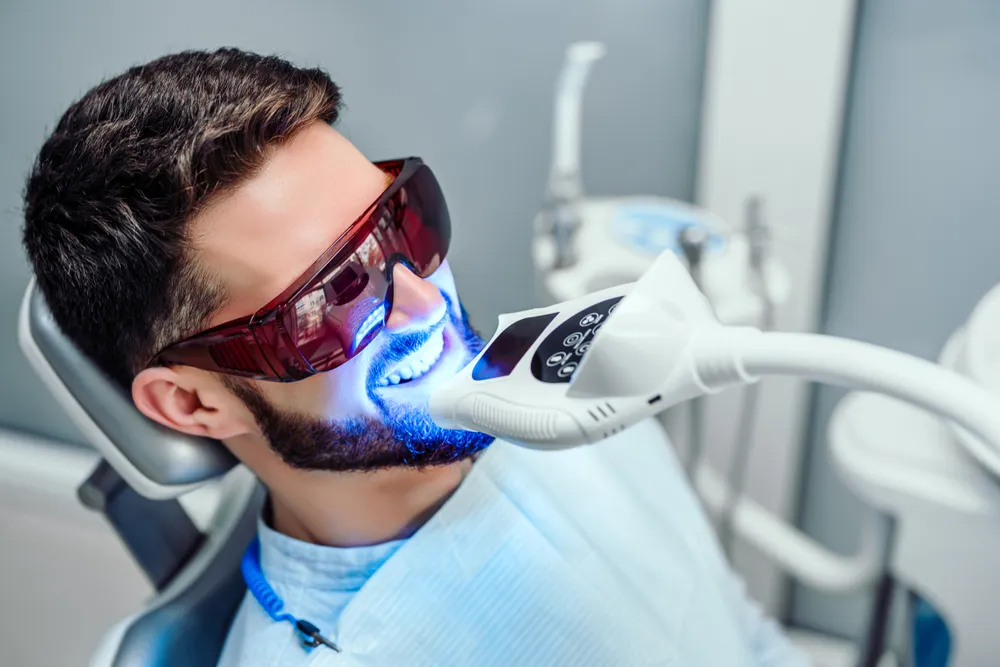Understanding Professional Teeth Whitening
Professional teeth whitening methods offer a significant upgrade over over-the-counter options, providing dramatic results and expert care. The process targets intrinsic and extrinsic stains, giving you a brighter, more confident smile. Unlike drugstore products, professional treatments use higher concentrations of whitening agents, such as hydrogen peroxide or carbamide peroxide, to break down stains more effectively. This leads to quicker and more noticeable results. It is essential to consult with a dentist before undergoing any whitening treatment. They can assess your oral health, identify any underlying issues, and recommend the most suitable approach for your specific needs. This initial consultation ensures that the whitening process is safe and effective for you. The benefits extend beyond aesthetics, boosting self-esteem and making a positive first impression.
Different Methods of Professional Teeth Whitening
Professional teeth whitening offers a variety of methods to achieve a dazzling smile, each with its unique approach and advantages. These methods range from in-office treatments, which provide immediate and dramatic results, to take-home kits, which offer the convenience of whitening on your schedule. Moreover, dentists may also recommend and incorporate whitening toothpastes and rinses as part of a comprehensive oral hygiene strategy. The choice of method depends on factors such as your specific needs, the severity of staining, and your budget. A dentist can help you determine the most suitable option after a thorough examination of your teeth and gums, ensuring both effectiveness and safety. Professional treatments not only offer the potential for a brighter smile but also help in maintaining overall oral health.
In-Office Whitening

In-office teeth whitening is the fastest way to achieve a dramatically brighter smile. This procedure, typically performed by a dental professional, involves applying a high-concentration whitening gel to your teeth. The process often includes the use of a special light or laser to accelerate the whitening process. This method is ideal for individuals seeking immediate results, as the entire procedure usually takes about an hour or less. In-office whitening is highly effective for treating various types of stains, including those caused by coffee, tea, tobacco, and aging. The dentist carefully monitors the process to ensure the safety of the gums and teeth. Before the treatment, your dentist will evaluate your oral health to make sure it’s the right choice for you. The immediate impact of in-office whitening makes it a popular choice for special occasions or when a quick smile transformation is desired.
The Procedure Explained
The in-office teeth whitening procedure is a streamlined process designed to deliver quick and effective results. The process begins with the dentist protecting your gums and soft tissues with a protective barrier. This step is crucial to prevent irritation from the strong whitening agent. Next, a high-concentration whitening gel is applied to the teeth, and often, a special light or laser is used to enhance the whitening effect. The light helps to activate the whitening agents, accelerating the stain-removal process. The gel typically remains on the teeth for a specific duration, after which it is removed, and the process may be repeated one or more times during the same session to achieve the desired level of whiteness. Throughout the procedure, the dentist monitors your teeth and gums to ensure both safety and comfort. The final step involves rinsing your mouth and providing you with post-whitening care instructions.
Benefits of In-Office Whitening
The benefits of in-office teeth whitening are numerous, making it a favored option for those seeking a brighter smile. The most immediate advantage is the speed at which results are achieved. Unlike take-home methods, in-office whitening can deliver a significantly whiter smile in a single session, typically within an hour. The high concentration of whitening agents used in the procedure is highly effective at removing deep-set stains caused by coffee, tea, tobacco, and aging. Furthermore, the procedure is carried out under the supervision of a dental professional. This ensures that the process is safe and that any potential side effects, such as sensitivity, are managed promptly. The professional environment also provides comfort and assurance. The immediate and dramatic results of in-office whitening can boost your self-esteem and confidence, leaving you with a radiant smile.
Take-Home Whitening Kits

Take-home whitening kits offer a convenient and cost-effective way to whiten your teeth at your own pace. These kits, often prescribed by a dentist, provide custom-fitted trays and a lower concentration of whitening gel compared to in-office treatments. The trays are designed to fit your teeth precisely, ensuring that the whitening agent comes into contact with the surfaces of your teeth without irritating your gums. The main benefit of take-home kits is their flexibility. You can whiten your teeth in the comfort of your own home, on a schedule that suits you. The process typically involves wearing the trays for a specified amount of time each day or night, as recommended by your dentist. This method allows for gradual whitening over a period of weeks, resulting in a brighter and more confident smile.
How Take-Home Kits Work
Take-home whitening kits are designed to be user-friendly and effective. The process begins with your dentist taking impressions of your teeth to create custom-fitted trays. These trays are crucial because they ensure the whitening gel is evenly applied to your teeth and minimizes contact with your gums. Once the trays are ready, your dentist will provide you with the whitening gel and detailed instructions on how to use it. You’ll typically fill the trays with the gel and wear them for a specific duration each day or night, depending on the concentration of the gel and your dentist’s recommendations. The gel contains a bleaching agent, such as carbamide peroxide, which penetrates the enamel to break down stain molecules. Regular use over several weeks gradually lightens your teeth. It’s essential to follow your dentist’s instructions carefully to maximize results and minimize potential side effects, such as tooth sensitivity.
Advantages of Take-Home Kits
Take-home whitening kits present several advantages that make them a popular choice for those seeking a brighter smile. Convenience is a primary benefit, as you can whiten your teeth at your own convenience, without the need for multiple dental appointments. The cost-effectiveness of take-home kits is another significant advantage. They are generally less expensive than in-office treatments, making them a more accessible option for many individuals. The custom-fitted trays ensure that the whitening gel is applied evenly and precisely, optimizing the whitening process. The use of a lower concentration of whitening agent in take-home kits typically reduces the risk of sensitivity, a common side effect of professional whitening. Furthermore, the gradual whitening process allows you to monitor your progress and adjust your treatment as needed, resulting in a customized and controlled experience.
Whitening Toothpastes and Rinses

Whitening toothpastes and rinses serve as a supporting role in maintaining a bright smile and are a widely accessible option for enhancing your oral hygiene routine. These products contain mild abrasives and chemical agents that help to remove surface stains and prevent new ones from forming. While they are generally less effective than professional whitening treatments, they can still contribute to a brighter smile over time. It is important to note that whitening toothpastes and rinses primarily target extrinsic stains, which are caused by foods, drinks, and tobacco use. They do not significantly alter the intrinsic color of your teeth. Therefore, they are best used as part of a comprehensive oral hygiene regimen, complementing professional whitening or maintaining the results of previous treatments. These products are readily available and easy to incorporate into your daily routine. They can be a good option for those looking for a cost-effective way to maintain a brighter smile between professional treatments.
Ingredients and Effectiveness
Whitening toothpastes and rinses contain various ingredients that contribute to their stain-removing properties. Mild abrasives, such as hydrated silica or calcium carbonate, gently scrub the surface of your teeth, removing surface stains. These abrasives help to polish the enamel, making the teeth appear brighter. Some products also contain chemical agents like hydrogen peroxide or baking soda, which have mild bleaching effects. Hydrogen peroxide helps to break down stain molecules, while baking soda has mild abrasive and whitening properties. The effectiveness of whitening toothpastes and rinses depends on the specific ingredients and their concentrations, as well as how consistently they are used. While they can help remove surface stains and prevent new ones from forming, they are typically less effective than professional whitening treatments. For best results, follow the product’s instructions and consult with your dentist to determine the most suitable products for your needs.
Limitations of Whitening Toothpastes
Whitening toothpastes and rinses, despite their convenience, have limitations that are important to consider. They are generally less effective at whitening teeth compared to professional treatments. The concentrations of whitening agents in these products are significantly lower, making them less capable of addressing deeper, intrinsic stains. Whitening toothpastes primarily focus on removing surface stains caused by foods, drinks, and tobacco. They do not alter the natural color of your teeth, which can be influenced by genetics or aging. Moreover, overuse of abrasive toothpastes can potentially damage the enamel, leading to increased sensitivity and making your teeth more susceptible to stains. Therefore, it’s crucial to use these products as directed and to consult with your dentist. They can assess your oral health and recommend the best approach to achieve your desired level of whiteness. They can help set realistic expectations and ensure you maintain optimal oral health.
Maintaining Your White Smile

Maintaining a white smile requires a combination of good oral hygiene practices and lifestyle adjustments. After undergoing teeth whitening, it’s essential to take proactive steps to prevent new stains from forming and to preserve the results of your treatment. This includes adhering to post-whitening care instructions, avoiding stain-causing foods and drinks, and attending regular dental check-ups. These measures ensure that your smile remains bright and healthy. Consistency is key in maintaining a white smile. By making these practices a regular part of your routine, you can extend the lifespan of your whitening treatment and enjoy a radiant smile for years to come.
Post-Whitening Care Tips
Following post-whitening care tips is essential to maintain the results of your teeth whitening treatment. Immediately after the procedure, your teeth are more susceptible to staining. For the first few days, it’s crucial to avoid foods and drinks that can stain your teeth, such as coffee, tea, red wine, and dark-colored berries. Additionally, avoid smoking or using tobacco products, as they are major contributors to teeth discoloration. Use a soft-bristled toothbrush and brush gently to prevent any abrasion to the enamel. Your dentist may recommend a specific toothpaste and mouthwash to use during this period. It’s also advisable to schedule follow-up appointments with your dentist to monitor your progress and ensure that your teeth remain healthy and bright. Adhering to these post-whitening care instructions helps maximize the longevity of your whitening results.
Avoiding Stain-Causing Foods and Drinks
Avoiding stain-causing foods and drinks is a vital part of maintaining a white smile. Certain foods and beverages contain pigments that can easily adhere to the enamel and cause discoloration. Coffee and tea, for example, are known culprits due to their dark color and tannins. Red wine also has a high staining potential. Berries, such as blueberries and blackberries, contain pigments that can stain your teeth. Soy sauce and balsamic vinegar are other foods that can contribute to staining. To minimize the impact of these foods and drinks, it’s advisable to consume them in moderation. Rinsing your mouth with water after consuming these items can help to remove pigments and prevent them from sticking to your teeth. Brushing your teeth after meals, when possible, can further reduce staining. By being mindful of your dietary choices, you can significantly extend the life of your whitening treatment.
Regular Dental Check-ups

Regular dental check-ups are essential for maintaining a healthy and white smile. These check-ups provide an opportunity for your dentist to monitor your oral health, identify any potential issues, and provide professional cleaning. During the cleaning, the dentist will remove plaque and tartar, which can contribute to staining. The dentist can also polish your teeth, which helps to remove surface stains and makes your teeth appear brighter. Regular check-ups also allow the dentist to assess the effectiveness of your whitening treatment and make recommendations for maintaining your results. They can identify any early signs of dental problems, such as cavities or gum disease, and provide timely treatment. Consistent dental care is crucial for overall oral health and ensures that your smile remains healthy and attractive. Regular check-ups play a vital role in preserving your white smile and preventing any potential issues.
Cost and Considerations
The cost and various considerations associated with professional teeth whitening vary depending on the chosen method, the dentist’s location, and the specific services provided. It’s essential to understand the financial implications and potential factors that can influence the overall cost. This includes the type of whitening treatment, such as in-office whitening or take-home kits, as well as the expertise of the dental professional and the technology used. It’s crucial to discuss the cost with your dentist during the initial consultation. They can provide a detailed breakdown of the expenses involved and explain any payment options or financing plans available. Transparency about costs helps you make an informed decision and manage your budget effectively. You should also consider the value of the investment, considering the benefits of a brighter, more confident smile and improved oral health. Taking the time to understand the financial aspects helps you choose the most suitable option.
Factors Affecting Cost
Several factors can affect the cost of professional teeth whitening. The type of whitening treatment is a primary determinant of cost. In-office whitening, which involves the use of advanced technology and is performed by a dentist, generally costs more than take-home kits. The geographic location of the dental practice also plays a role. Practices located in areas with a higher cost of living often have higher fees. The expertise and experience of the dentist can also influence the cost, as specialists with more experience might charge more for their services. The specific materials and technologies used during the treatment, such as the type of whitening gel or the use of special lights, can also affect the overall cost. It’s advisable to inquire about all potential costs during your consultation to have a clear understanding of the financial implications. Doing so allows you to compare options and make a choice that aligns with your budget and preferences.
Potential Risks and Side Effects

While professional teeth whitening is generally safe, it’s important to be aware of potential risks and side effects. The most common side effect is tooth sensitivity, which can occur during and after the treatment. This sensitivity is typically temporary and subsides within a few days. Gum irritation is another potential side effect, which can happen if the whitening agent comes into contact with the gums. Your dentist will take precautions to minimize this risk by using protective barriers. In rare cases, more severe side effects may occur, such as changes in tooth enamel or damage to dental work. The risk of these adverse effects is reduced when treatment is performed by a qualified dental professional who uses proper techniques and precautions. Before undergoing any whitening treatment, your dentist will assess your oral health and discuss the potential risks and side effects. Doing so ensures that you are well-informed and prepared for the procedure.
Making the Right Choice
Making the right choice when it comes to professional teeth whitening involves careful consideration of your individual needs, preferences, and budget. Begin by scheduling a consultation with your dentist. They will assess your oral health, identify any existing issues, and discuss your goals for teeth whitening. They can explain the different methods available and recommend the most suitable option for your specific needs. Consider factors such as the severity of your tooth discoloration, your time constraints, and your budget. In-office whitening offers immediate results but is generally more expensive. Take-home kits provide convenience and cost-effectiveness but require more time to achieve the desired results. Research different dental practices and compare their services, costs, and patient reviews. Make sure to ask questions and clarify any concerns you have during your consultation. Selecting a reputable dentist and following their recommendations will result in a brighter, more confident smile.
